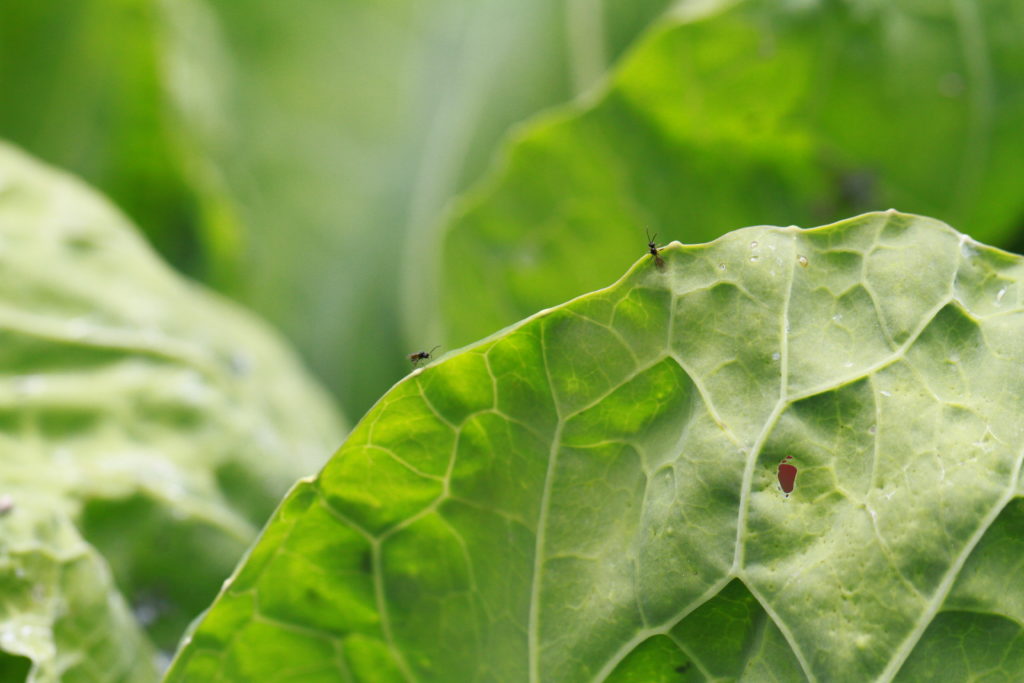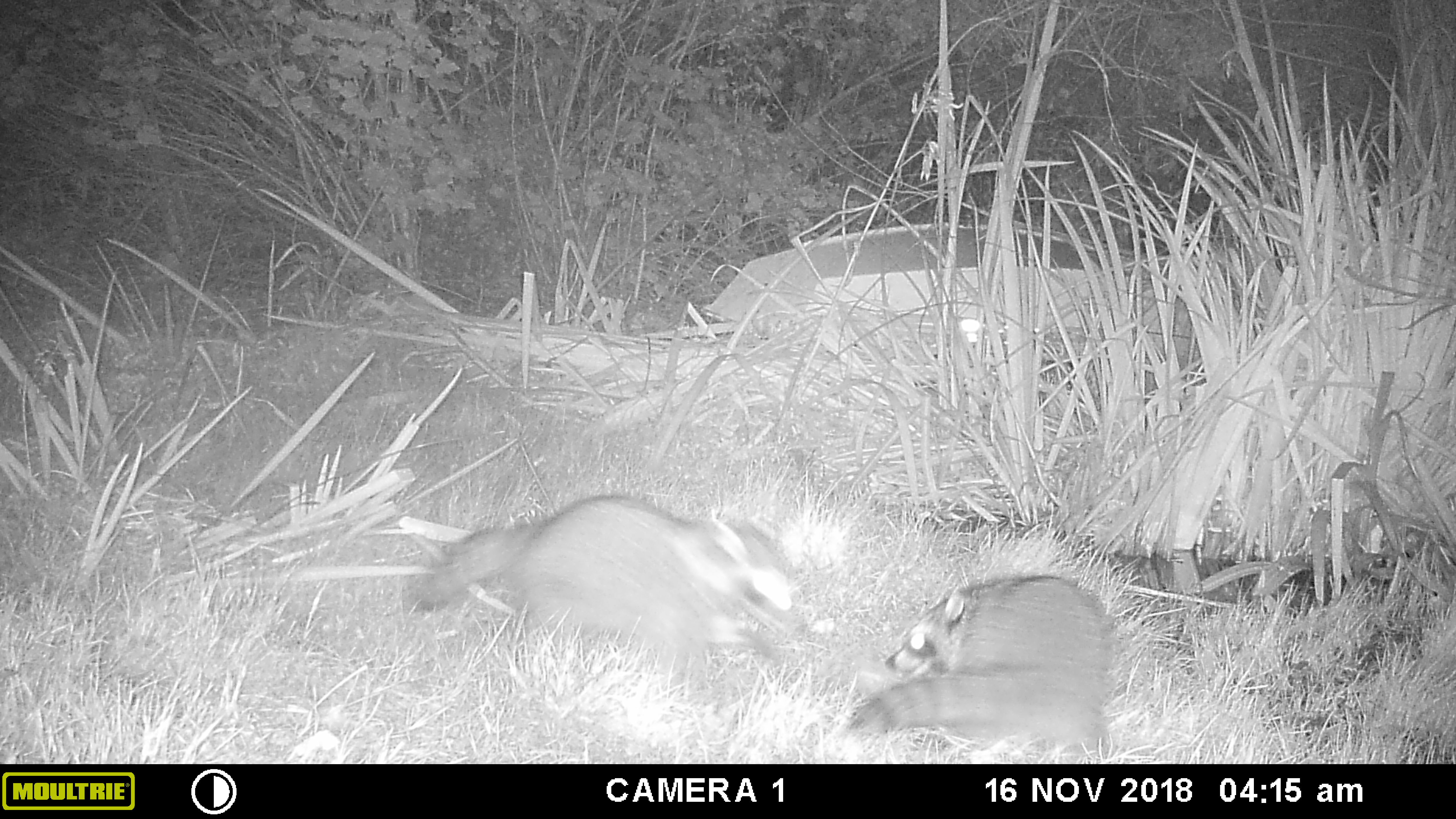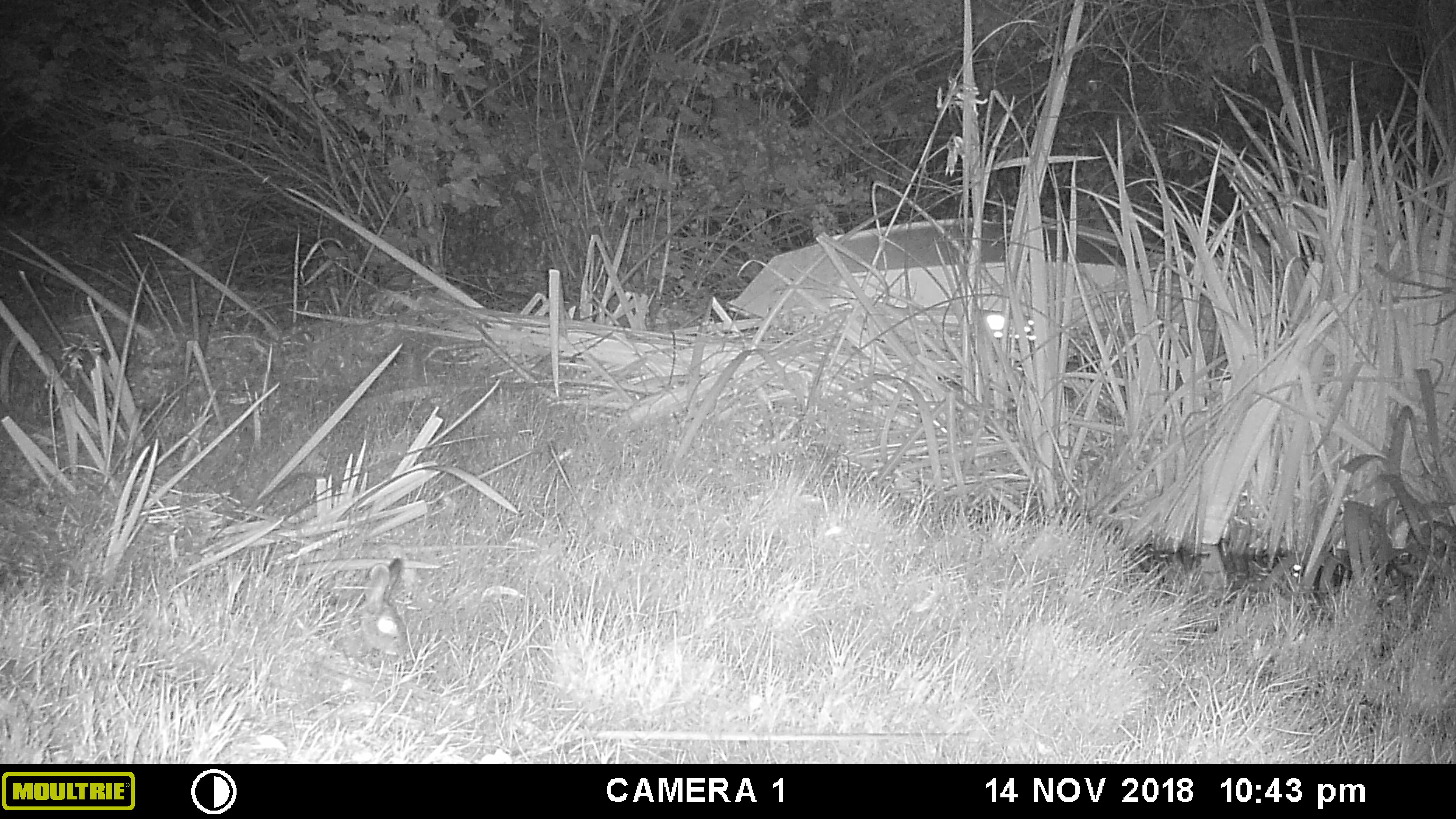Aphid Predators II
A WALK ON THE TINY SIDE

Remember this image of a sneaky syrphid fly larvae? Well, what I didn’t point out before was that there’s an even sneakier attendee at this aphid-nomming party. And she’s that little black line across the white leaf vein in the top middle of the photo: a parasitoid wasp.
Parasitoid wasps are pretty full-on — their simple life functions can include grotesqueries you thought only originated in the imaginations of sci-fi script writers. But they’re part of the complex web of ecological checks and balances in their systems.
The difference between parasitic and parasitoid is that a parasitic animal generally doesn’t kill or even directly seriously harm the host; it needs the host to continue functioning so that it can support the parasite. A parasitoid uses the host up in the process of supporting its own growth and/or reproduction.

That sneaky parasitoid lady and her cohort are the authors of the scene of destruction above. What look like little brown bumps on my Brussels sprouts leaf are in fact the corpses of aphids: the dried, hardened exoskeletons of used-up hosts. You can even see a small, round hole in the top of one — the door the exiting parasitoid punched out and left open behind it.
Parasitoid wasps like this one home in on the distinct chemicals released by the feeding and typical drama (like terror over a syrphid fly larva attack) of an aphid colony. Fertilized females settle on leaves and begin their prowl.

They’re looking for nice, juicy aphids that will be able to feed their grubs to adulthood. With a quick stab of her ovipositor, a female wasp injects a single egg into a chosen aphid, then prowls on. Once that tiny egg hatches, however, the aphid will slowly be hollowed out from the inside by the hungry, growing grub, until only a husk is left and the mature wasp breaks its way out, exercising its brand-new wings in flight for the first time.
The world is made up of opportunities being taken: everything is a resource and every resource is a chance for an existence to bloom. Sometimes, that existence is just really horrific. But it works for them and it works to create a functioning ecosystem — dynamic equilibrium — so we can all actually be very grateful for the parasitoid wasps.
Creeped out, but grateful.


